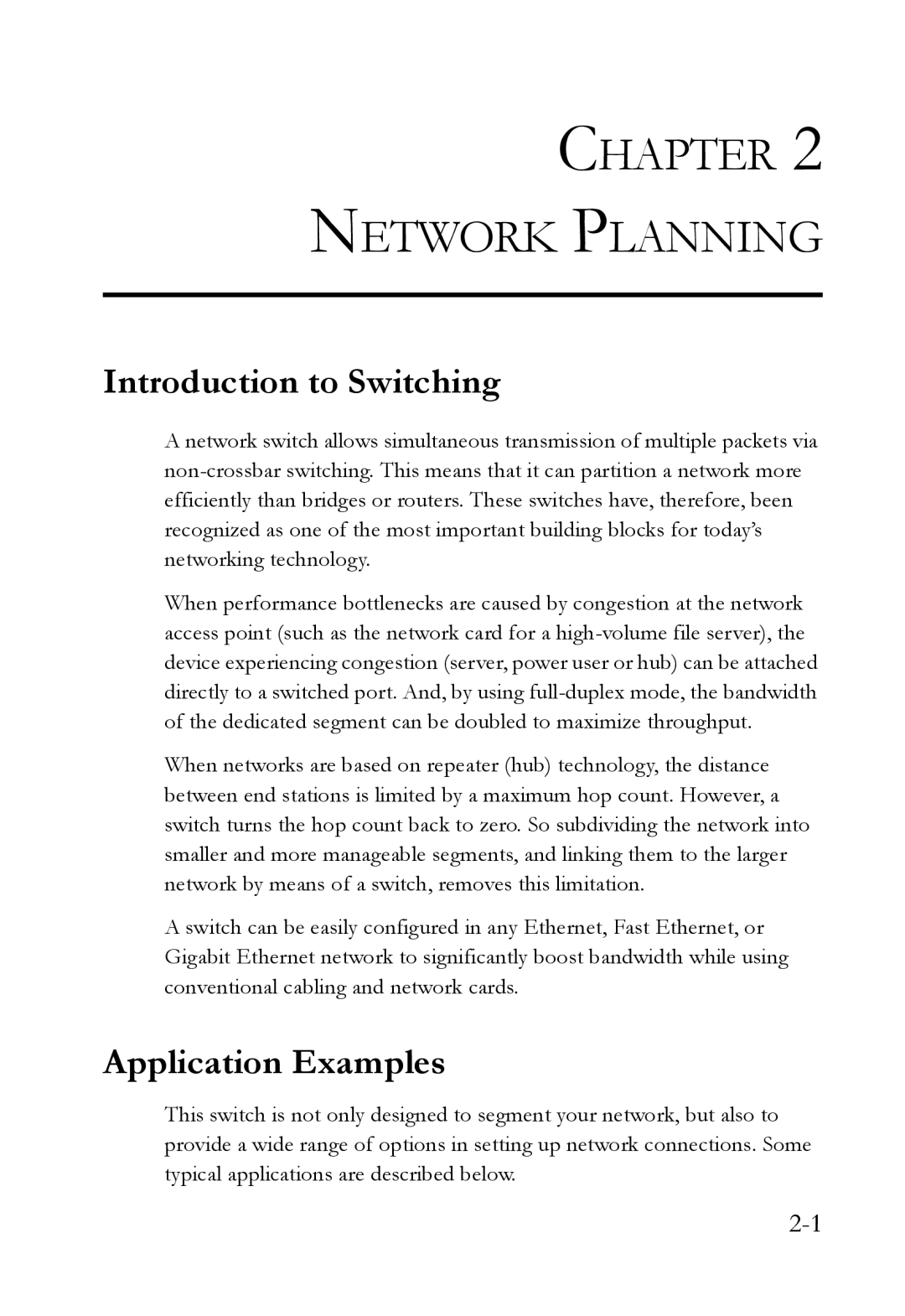CHAPTER 2
NETWORK PLANNING
Introduction to Switching
A network switch allows simultaneous transmission of multiple packets via
When performance bottlenecks are caused by congestion at the network access point (such as the network card for a
When networks are based on repeater (hub) technology, the distance between end stations is limited by a maximum hop count. However, a switch turns the hop count back to zero. So subdividing the network into smaller and more manageable segments, and linking them to the larger network by means of a switch, removes this limitation.
A switch can be easily configured in any Ethernet, Fast Ethernet, or Gigabit Ethernet network to significantly boost bandwidth while using conventional cabling and network cards.
Application Examples
This switch is not only designed to segment your network, but also to provide a wide range of options in setting up network connections. Some typical applications are described below.
